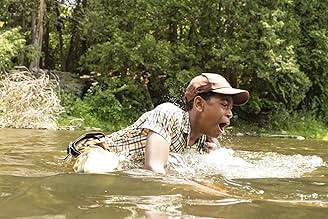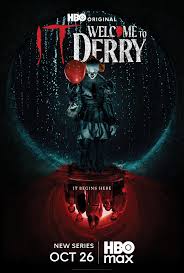This guide gives you a quick take on whether It: Welcome to Derry suits your household – show drops today. Mood stays grim throughout. Think deep dread, unsettling visuals, or intense kid-related distress instead. Check this out before your teen requests it online.

What this series covers
The story begins in 1962 in Derry, Maine when a family arrives in the town. Odd things kick off soon after. Kids go missing without a trace. Panic creeps through the townspeople. That’s when Pennywise shows up again. Grown-ups can’t keep children safe this time. The kids are up against fear and threats, left on their own. Horror from beyond mixes with people’s harshness, along with narrow-minded hate.
Core content warnings
Violence plus bloodshed. Harsh. Savage assaults. Upsetting injury involving kids. Explicit moments.
Frightening scenes. Yet sudden shocks pile up fast. Twisted faces appear warped. Visions blur what’s real. Creepy clowns lurk nearby.
Foul talk shows up a lot – swearing left and right with words like f and hell, crap too.
Mature topics ahead. Racism pops up. Kids facing pain. Holocaust mentioned. Power gets twisted.
Folks messing around, teens hinting at sexy stuff. Nothing shown outright though – just talk. Though bare skin’s missing, vibes are there.
Drinking by grown-ups shows up a few times. Substance use pops in now and then.

My responses or particular moments
I caught the first showing after dark. One time I stopped it, then another. That moment with the drain murmuring got me right away. The kid’s terror spreads across the scene in slow, quiet frames – more like unease creeping in than anything forced or flashy.
A single moment shows a lamp made from actual skin. I froze, took it in. Instead of ghosts or monsters, the series digs into true cruelty people are capable of.
A different moment captures a teenager gripping a firearm following a brutal clash. The shot keeps tight. Fear mixes with sorrow across his face. That image stuck around in my head.
I caught sight of the dad stationed at the Air Force base. Yet he deals with prejudice from those above him. In fact, the strain goes way past any creature or beast. After all, people bring horror just as much. While it doesn’t sugarcoat the past or feelings. Because it calls for real emotional grit.
Useful tips you can actually use at home
Try watching an episode solo if you’re unsure. Because only you know what your teen can handle – not some label.
If your teen’s watching, join them for episode one. Turn the lights up bright. Make sure the space stays relaxed. Hit pause if they get too scared.
Chat once you’ve seen it. Pose clear questions. Try brief, straightforward cues:
When did fear hit hardest?
Who didn’t step in
What sparked fear across the place
Are you feeling secure at this moment
If your teen seems upset, pulls away silently, or has bad dreams – shut things down right away.

Age guidance
Beneath 14? Pass. Fear plus distress messes up young brains.
14 till 17. Might work if careful. Try watching together, then talk about it.
17 or older. Fine for those who can take deep horror and heavy feelings.
Each teenager is unique. When your kid has trouble with anxiety or bad dreams, pick a different series instead. On the flip side, if they can deal with heavy topics and intense scares, this one brings real substance.
Important topics worth chatting about with your teenager
Fear. That’s what holds a place together when no one speaks up. When quiet shields what shouldn’t be hidden.
Racism. How the old soldier was treated reveals deep flaws in the system. Quiz your kid about how authority fuels harsh behavior.
Young ones hurt inside. In Derry, children deal with fear on their own. Let’s mention actual help that’s around.
Leadership breaks down. Kids see danger, grown-ups look away. Talk about duty instead of bravery.
Staying alive – it shows you face threats head-on instead of running away.
What to monitor
Sleep messed up from what you saw.
Emotional shutdown.
Fear of the dark got worse, or now hates being alone at bedtime.
Jokes or remarks involving dying or hurting oneself.
If you spot any, halt the sequence – try quiet material or pause instead.
My final take
It: Welcome to Derry hits hard. This tale packs fear, hurt, bias – yet also bravery. The terror digs into your feelings. Dread stuck with me way past the credits. The way it’s told? I honor that. Same goes for how heavy it feels.
If your teen’s into this series, take it seriously – walk beside them. Keep near. When fear’s left alone, it grows strong; but once spoken out loud, it starts to loosen up.


